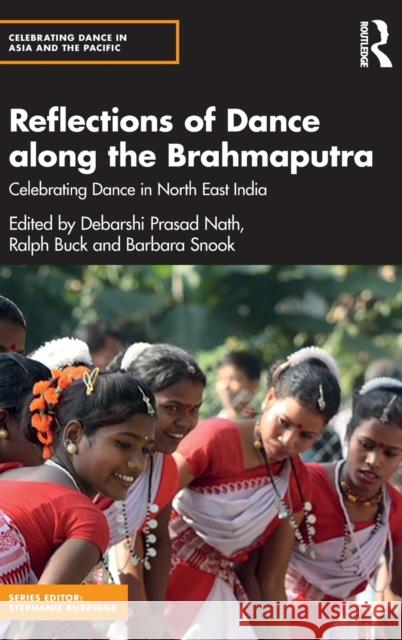Reflections of Dance along the Brahmaputra: Celebrating Dance in North East India » książka
Reflections of Dance along the Brahmaputra: Celebrating Dance in North East India
ISBN-13: 9781032452388 / Angielski
Reflections of Dance along the Brahmaputra: Celebrating Dance in North East India
ISBN-13: 9781032452388 / Angielski
(netto: 673,60 VAT: 5%)
Najniższa cena z 30 dni: 680,04
ok. 22 dni roboczych.
Darmowa dostawa!
This volume brings a critical lens to dance and culture within North East India. Through case studies, firsthand accounts, and interviews, it explores unique folk dances of Indigenous communities of North East India that reflect diverse journeys, lifestyles, and connections within their ethnic groups, marking almost every ritual and festival. Dance for people of North East India, as elsewhere, is also a way of declaring, establishing, celebrating, and asserting human’s relationship with nature. The book draws attention to the origins and special circumstances of dances from North East India. It discusses a range of important folk-dance forms alongside two key classical dance forms in North East India, Manipuri and Sattriya. The essays examine how these dance forms play an important role in the region’s socio-cultural, economic, and political life, intertwining religion and the arts through music, dance, and drama. Further, they also explore how folk dance cultures in North East India has never been relegated to the background, never considered secondary, aesthetically, or otherwise, but have become expressions of political and cultural identity. An evocative work, this volume will be of interest to students and researchers of pedagogy, choreography, community dance practice, theatre and performance studies, social and cultural studies, aesthetics, interdisciplinary arts, and more. It will be an invaluable resource for artists and practitioners working in dance schools and communities.
This volume brings a critical lens to dance and culture within North East India. Through case studies, firsthand accounts, and interviews, it explores unique folk dances of Indigenous communities of North East India that reflect diverse journeys, lifestyles, and connections within their ethnic groups, marking almost every ritual and festival. Dance for people of North East India, as elsewhere, is also a way of declaring, establishing, celebrating, and asserting human’s relationship with nature.
The book draws attention to the origins and special circumstances of dances from North East India. It discusses a range of important folk-dance forms alongside two key classical dance forms in North East India, Manipuri and Sattriya. The essays examine how these dance forms play an important role in the region’s socio-cultural, economic, and political life, intertwining religion and the arts through music, dance, and drama. Further, they also explore how folk dance cultures in North East India has never been relegated to the background, never considered secondary, aesthetically, or otherwise, but have become expressions of political and cultural identity.
An evocative work, this volume will be of interest to students and researchers of pedagogy, choreography, community dance practice, theatre and performance studies, social and cultural studies, aesthetics, interdisciplinary arts, and more. It will be an invaluable resource for artists and practitioners working in dance schools and communities.











